How to Fix Update Error 0x800f0845 on Windows 10?
Failed to install updates
Some Windows 10 users are reporting that every pending Windows update they attempt to install ultimately fails with the 0x800f0845 error code. In most cases, affected users are reporting that this issue effectively prevents them from installing any new pending Windows update.
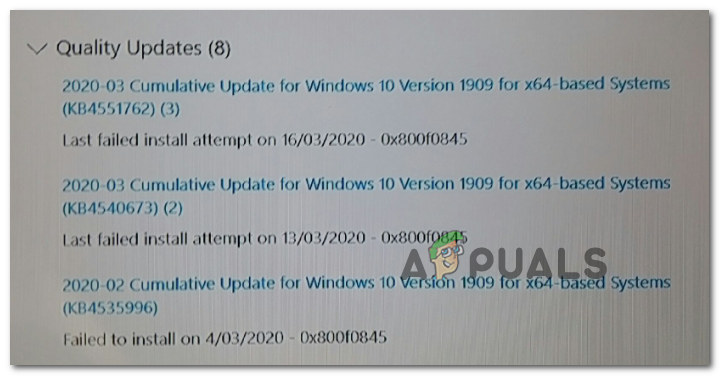
If you’re encountering this issue, you should start by checking if your operating system is not capable of fixing the issue automatically by running the Windows Update troubleshooter. In case the utility is not capable of fixing the issue by itself, you should also try resetting every WU component involved in the updating operation – either manually or by using the Update agent.
But in case the 0x800f0845 error is actually caused by some type of system file corruption, you should attempt to identify and fix them with the two built-in utilities – DISM and SFC. If that’s not enough, consider going for a clean install on the in-place repair.
However, if you’re not prepared to effectively reinstall your Windows version, you can most likely circumvent the broken WU component by installing the pending updates manually directly from the Windows Update Catalog.
Method 1: Running the Windows Update troubleshooter
Before trying any other fix, you should start simply by verifying if your computer is not able to fix the issue automatically. Fortunately, every recent Windows version (including Windows 10) include an automated utility that’s capable of scanning for the most common inconsistencies related to Windows Update and apply the recommended fix automatically in case a familiar scenario is discovered.
Sure, this will not fix every known issue out there, but it serves as a good first step in troubleshooting the 0x800f0845 error code.
To run the Windows Update troubleshooter, follow the instructions below to deploy it and apply the recommended fix:
- Press Windows key + R to open up a Run dialog box. Next, type ‘ms-settings:troubleshoot’ and press Enter to open up the Troubleshooting tab of the Settings tab.
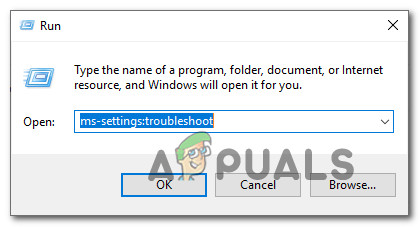
Accessing the Windows Update troubleshooter - Once you’re inside the Troubleshooting tab of the Settings app, move over to the right section and click on Windows Update, then click on Run the Troubleshooter.
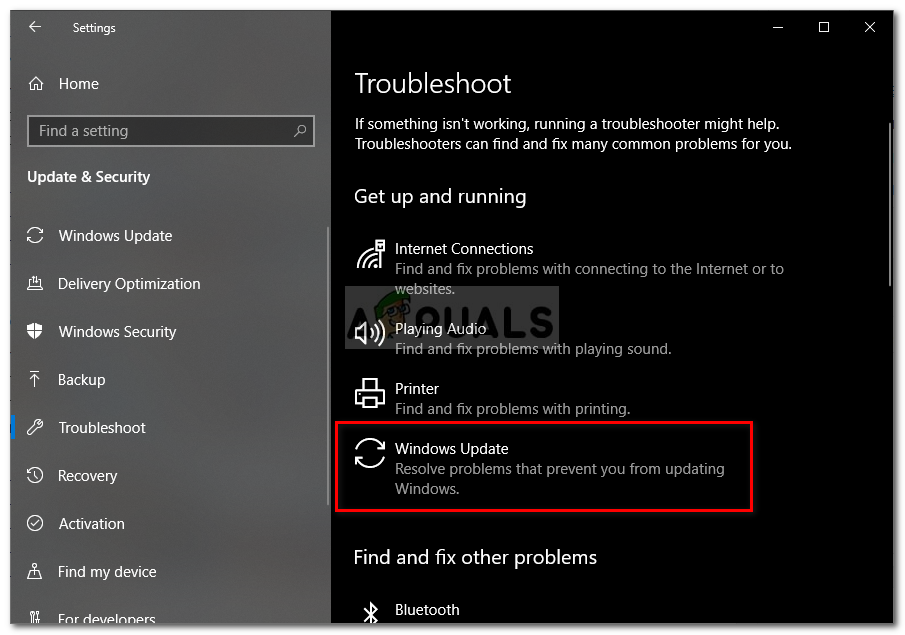
Running Windows Update Troubleshooter - As soon as you open the Windows Update Troubleshooter utility, it will begin scanning for common inconsistencies. Once this process is finished, click on Apply this fix in case fix gets recommended.

Apply this fix - Depending on the fix that gets recommended, you might need to follow a series of additional instructions.
- Once the fix is successfully applied, restart your computer and attempt to reinstall the updates that were previously failing with the 0x800f0845 error code.
Method 2: Reset Windows Update
Another fairly common cause that might end up triggering this error is one or more sub-component of Windows Update that’s actually stuck in a limbo state (it’s neither enabled or disabled). If this scenario is applicable, you should be able to fix this issue by resetting every WU component involved in the updating operation.
This can be achieved either by running an automated script or by doing this manually (from an elevated CMD prompt). But regardless of your preferred approach, we have created two separate guides to accommodate both types of users.
Resetting WU via Update Agent
- Open this link (here) from your default browser and click on the Download button associated with ResetWUEng.zip to download the Reset Windows Update agent.
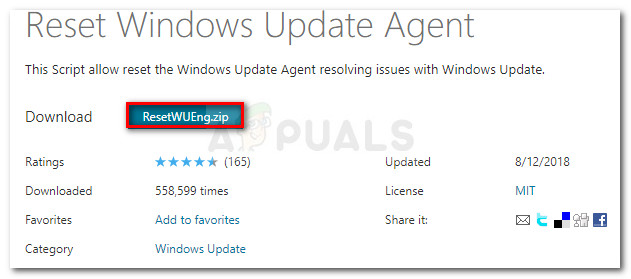
Download Windows Update Reset Agent - After the download is complete, go ahead and extract the archive with a utility like 7zip or Winzip.
- Once the utility is extracted, double-click on ResetWUEng.exe and click Yes when prompted by the User Account Control (UAC) window.
- At the final prompt, click Yes and wait for the operation to complete, then restart your computer.
- After your computer boots back up, attempt to reinstall the update that was previously failing with the 0x800f0845 error and see if the issue is now resolved.
- In case the same problem is occurring, move directly to Method 3.
Resetting WU via elevated CMD
- Press Windows key + R to open up a Run dialog box. Inside the new text box, type ‘cmd’ and press Ctrl + Shift + Enter to open up an elevated Command Prompt. When you see the UAC (User Account Control), click Yes to grant administrative privileges.

Running Command Prompt as an administrator - Once you’re inside the elevated CMD prompt, type the following command in whichever order and press Enter after each one in order to stop all relevant Windows Update services:
net stop wuauserv net stop cryptSvc net stop bits net stop msiserver
Note: These commands will effectively stop the Windows Update, MSI Installer, Cryptographic and BITS services.
- Once every relevant service has been stopped, run the two following commands in order and press Enter after each one:
ren C:\Windows\SoftwareDistribution SoftwareDistribution.old ren C:\Windows\System32\catroot2 Catroot2.old
Note: This operation will clear and rename the SoftwareDistribution and Catroot2 folders. Keep in mind that the two folders are being used as storage containers to store temporary OS update files by the WU component. Since there’s no way of deleting them conventionally, you will need to rename them in order to force your OS to create new equivalents.
- After the two new folders have been renamed, run the following commands in whichever order and press Enter after each command in order to re-enable the services that you disabled at step 2:
net start wuauserv net start cryptSvc net start bits net start msiserver
- After every service has been restarted, attempt to reinstall the Windows Updates that were previously failing and see if the operation completes without the 0x800f0845 error code.
In case the same issue is still occurring, move down to the next potential fix below.
Method 3: Running DISM and SFC scans
According to affected users, this particular issue (failure to install a certain Windows update with the error code 0x800f0845) is often caused by corrupted system files that end up breaking the WU (Windows Update) component.
This looks like a serious issue, but the good news is, Windows 10 includes a couple of built-in utilities (DISM and SFC) that are capable of fixing most instances of corrupted system files automatically.
SFC (System File Checker) is a 100% local tool that relies on a locally stored archive to fix instances of corrupted files by replacing them with healthy copies.
DISM (Deployment and Image Services and Deployment) uses a subcomponent of WU in order to download healthy equivalents of the corrupted files that need to be replaced. Although it’s superior to SFC, it’s effectiveness might be affected in case the corruption affects the very subcomponent that DISM uses.
Since the two utilities do things differently, our recommendation is to run both SFC and DISM scans in quick succession in order to maximize your chances of fixing the corrupted instance that’s causing the 0x800f0845.
Start by performing an SFC scan and wait patiently until the operation is complete.
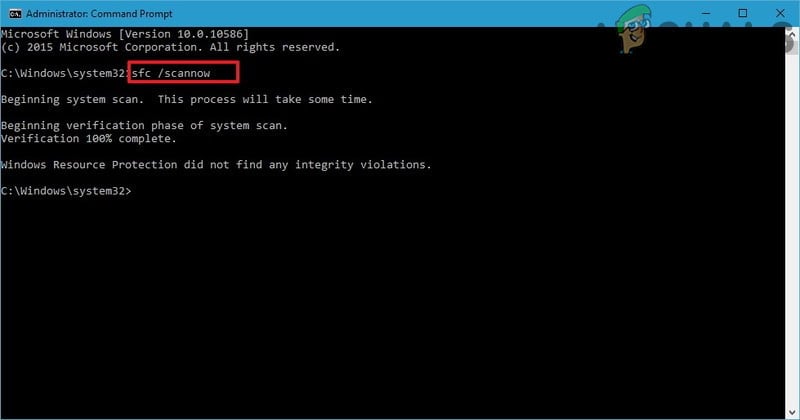
Note: Interrupting the operation before it completes might cause logical errors on your HDD/SSD that might lead to other problems.
Once the operation is complete, restart your computer and wait for the next startup to complete before initiating a DISM scan.
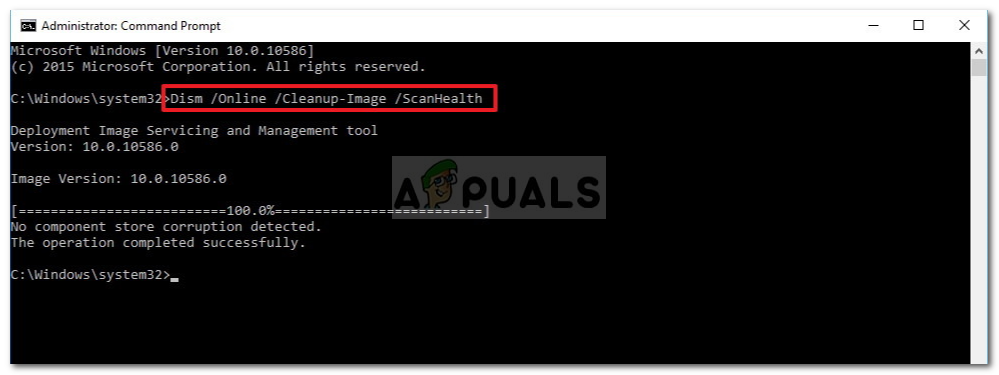
Note: DISM needs a reliable Internet connection in order to complete successfully, so ensure that you are connected to stable network before initiating this procedure.
After the second scan is finished, restart your computer and see if the operation is finished at the next computer startup.
Method 5: Updating using the Windows Update Catalog
In case none of the methods above have allowed you to identify and fix the root cause of the 0x800f0845 error code, you can always circumvent the WU component and install the pending update manually – without relying on the local Windows Update component.
You can do this easily by using the Microsoft Update Catalog. Several affected users have confirmed that this operation finally allowed them to bring OS build to the latest version available.
IMPORTANT: Keep in mind that this method will not fix the underlying cause that ends up causing the 0x800f0845 error code. It’s merely a workaround that should allow you to install the pending updates.
If you decide to go this route, follow the instructions below to install the pending updates manually via the Microsoft Update Catalog:
- Access this link (here) from your default browser to access the Microsoft Update Catalog official website.
- Once you’re inside, use the search function to search for the update that is failing to install with the 0x800f0845 error code.
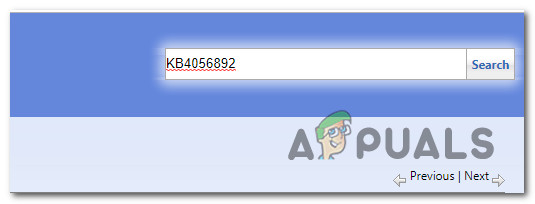
Searching for the update that you want to install manually - Once the results appear, identify the version that’s compatible with your Windows build by looking at the OS architecture and the Windows version.

Choosing the right Windows Update Note: If you don’t know your OS architecture, right-click on This PC in File Explorer and choose Properties from the context menu. Next, from the list of results, look at the System type and check the bit version of your OS.

Checking Operating system type - After you decide the correct update that you need to install on your computer, click on the Download button and wait for the process to complete.
- Once the download is complete, navigate to the location where the update was downloaded, right-click on the .inf file and choose Install.
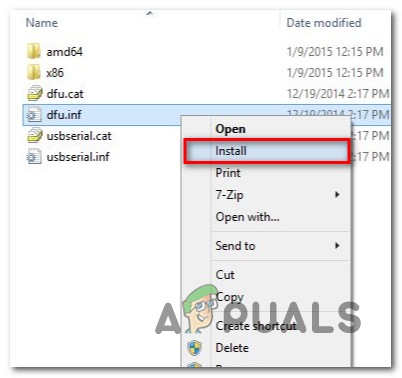
Installing the Inf driver - Follow the on-screen instructions to complete the installation, then repeat steps 2 to 5 with the remaining updates that are failing to install.
- After every pending update is successfully installed, reboot your machine and see if the pending updates have disappeared from the Windows Update screen.
Method 6: Performing a Repair install / Clean install
In case none of the fixes above have allowed you to fix this problem, it’s very likely that your system is dealing with some type of system file corruption that cannot be resolved conventionally. If this scenario is applicable, you will only be able to fix the issue by resetting every Windows component with a repair install (in-place repair) or clean install.
If you want to reset a very Windows component, the recommended approach would be to go for a repair install (in-place repair). This operation will only touch OS components, which means that your personal media, games, applications and even some user preferences will remain untouched.
Note: Keep in mind that you will likely need an installation media in order to perform repair install (in-place repair) – unless you are prepared to force 3 machine interruptions during the boot sequence in order to bring up the recovery menu (slightly risky).
But if you want a quick and painless procedure, you should absolutely go for a clean install. But keep in mind that unless you back up your data in advance, you will at least lose personal data stored on the OS drive and custom user preferences.





